Many people bought phones Android because they could do a lot that they could not do before iPhone. Of course, Apple was the first in several technologies like Touch ID, Retina displays, Siri and Apple Pay – copies of these features later appeared on other smartphones. But most often Apple is not the first in some way, but is famous for taking existing technology and bringing it to perfection.

Below we have compiled for you a list of features and characteristics in which Apple was not the first. But it is good news that they finally appeared in the tenth anniversary iPhone X.
#1. High pixel density displays
Take the Galaxy S6 as an example, which has a 5.1-inch Super AMOLED display with a 2560 x 1440 pixel resolution. Its pixel density is 577 PPI (pixels per inch). Until last year, the maximum pixel density iPhone was 400 PPI (on 'Plus' models) or just 326 PPI (on regular models). Many phones with Android have had this figure of 400, 500 or even 800 PPI for several years.
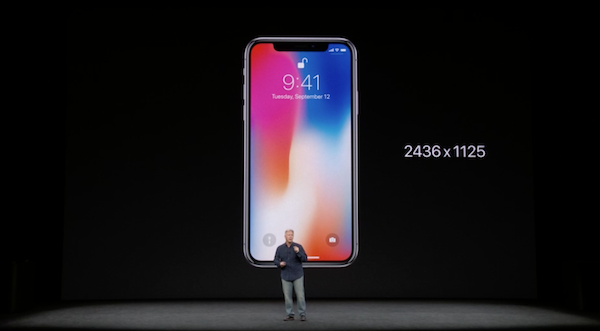
During the presentation of the Retina display at iPhone 4, Steve Jobs said that any density above 300 PPI is indistinguishable to the human eye. Perhaps this is true when comparing displays with ~ 400 PPI and ~ 500 PPI. But when you use a large full pixel display for a long time, you can tell by eye that the display density is below 500 PPI. If it is more than 500 PPI, then the difference really becomes difficult to grasp, and that is why displays with 800 PPI did not become popular on phones Android.
In any case, the display iPhone X at 462 PPI looks as sharp as smartphone displays Android.
# 2. OLED – displays
This is another race in which Apple is far behind. OLED – displays appeared in Samsung phones even before the first Galaxy S was released in 2010. Later, other smartphone manufacturers switched from LCD – displays to OLED. For the last couple of years, almost all flagships Android use OLED – displays: Samsung, LG, OnePlus, HTC, Huawei and Google.
There are advantages to using such displays. The panels are thinner and lighter, and each pixel is provided with its own backlight (LCD displays have a separate backlight system). Because of this, OLED – displays have an incredibly high contrast ratio, and in most cases they consume less power than LCD – displays. Due to the independent illumination of each pixel, only some parts of the display may light up. This is very useful for features like 'always-on display'.
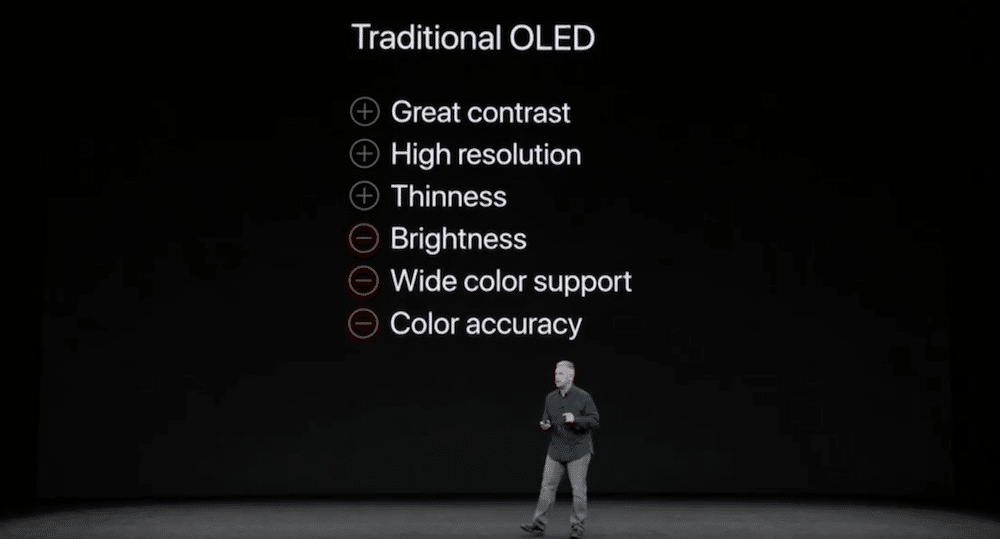
Apple explained why she hadn't used OLED – displays before. During the presentation, it was said that OLED – displays have low brightness, inaccurate color reproduction and do not support a wide range of them. According to the company, the display iPhone X does not have all of these disadvantages, and this is the first OLED display that is 'worthy to be on iPhone'.
There is proof of this. DisplayMate has won the 'Best Smartphone Display' title over the past few years for Samsung smartphones, but recently iPhone X.
# 3. Frameless displays
The designs for iPhone 6 and iPhone 6 Plus, which came out in 2014, did not change for the next three years. The new model iPhone 8 also looks the same and has a screen-to-body ratio below 70%. Since 2015, Samsung phones have begun to literally push the bezels apart, as seen in the Galaxy Edge lineup. In 2016, a Chinese Xiaomi Mi Mix was released with a display that occupied almost the entire front of the case.

2017 was the year of bezelless displays. The aspect ratio of more and more smartphones is becoming 18: 9. LG G6 and V30, Samsung Galaxy S8 and Note 8, Essential Phone PH-1 – all of these models came out earlier than iPhone X in September this year.
It's great that Apple did join the trend with their 5.8-inch bezel-less display. To be fair, this display shows less content than the 5.5-inch display iPhone 8 Plus. But when compared to the display iPhone 8, it not only displays more content, but also looks better thanks to the absence of the bottom and top bezels (and no, the notch does not prevent you from enjoying the screen the way they do).
#4. Qi wireless charging
Many were upset by the fact that Apple added support for Qi wireless charging to new models. There were rumors that the company was working on its wireless charging technology that works from a distance.
However, it is better than nothing. Qi wireless charging has been supported by phones for a long time Android since the Nexus 4 from 2012. It's not really wireless since the charging cradle still needs to be plugged into a power outlet. It also charges much slower than a regular wired one. 30 minutes on a 7.5W Qi stand charges iPhone 8 Plus by only 20 percent. A quick charge can charge it up to 50% in the same time.
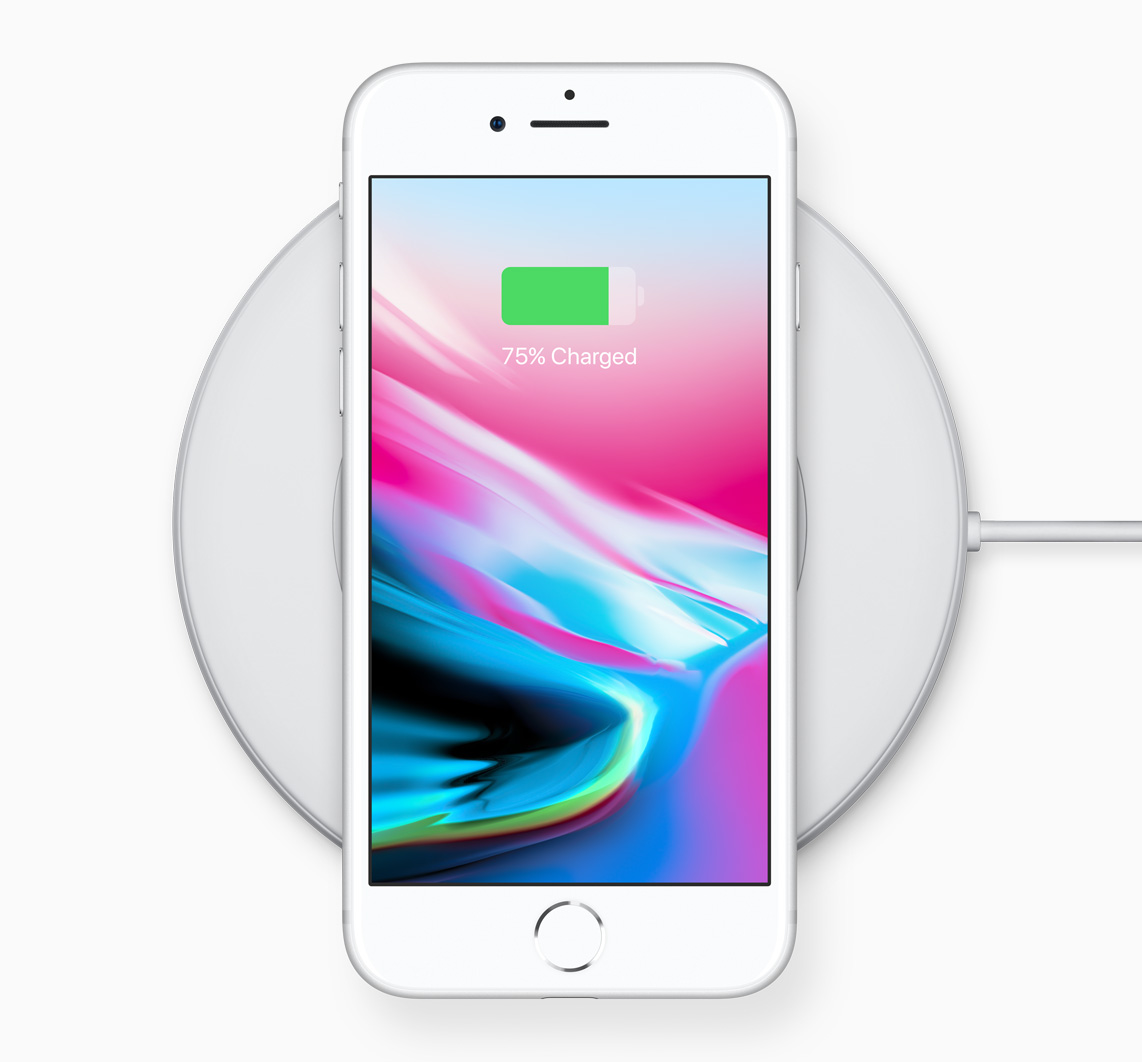
So why is it needed? It's comfortable. You can just put your phone on the cradle and it will start charging. There is no need to insert and remove the wire every time. Apple will make Qi charging more popular. Perhaps in the future, built-in stands will appear in tables, bedside tables and cars around the world. Most likely, your smartphone is on the table right now. Imagine that he could be charged instead of wasting energy on the contrary. And the slow speed is not that important if you charge your phone at night.
#five. Water resistance
Sony has long added water and dust resistance to its Xperia smartphones. However, they could only be filmed underwater in a special case. Samsung has been waterproofing its smartphones since 2014, starting with the Galaxy S5.
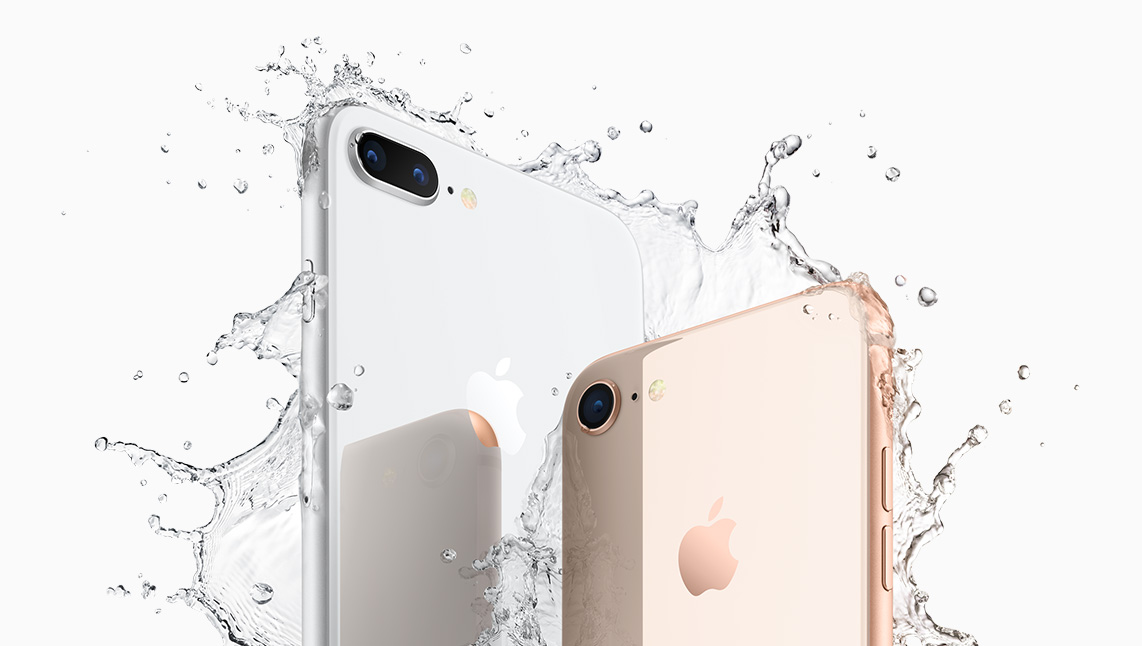
Then everyone was wondering if it made sense for Apple to add water protection to iPhone. Since 2011 Apple Care + covers repairs for any damage iPhone, including fluid damage ($ 49 repair). IP67 dust and water protection only appeared on iPhone 7, which came out last year.
But this does not motivate you to dip your iPhone in water – liquid damage is not covered under warranty. However, such protection is very useful in cases where you accidentally let your phone float freely.
# 6. Fast charging
It never seemed to take long to charge iPhone as its battery size was quite small compared to phones Android. For example, 5W of standard charging was enough to quickly charge iPhone 5s with a 1,560mAh battery. This changed with the 'Plus' models. It takes a very long time to charge them with regular charging. A full charge from zero to one hundred percent takes three hours.
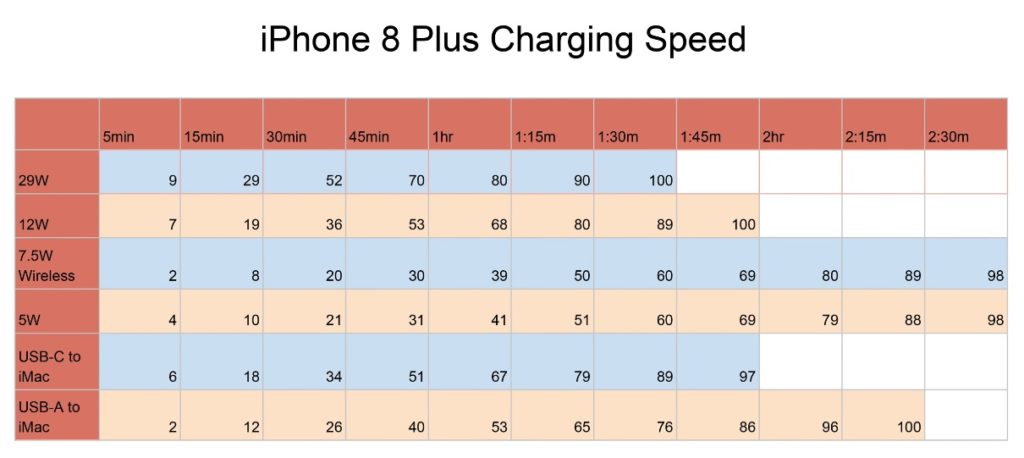
The phones Android support several types of fast charging: Qualcomm QuickCharge, Oppo VOOC and USB Power Delivery. With them, the 3,000mAh battery is fully charged in half in just half an hour. Fortunately, Apple added USB Power Delivery support to the newer models iPhone 8 and iPhone X. However, they still come with a standard 5W charger. It will take about $ 75 more to buy a suitable fast charger. This is a big disadvantage, as phones Android can be charged with cheaper fast chargers. And phones Motorola for $ 300 are already on sale with fast chargers.
Still, it's great that Apple has finally added support for fast charging.
# 7. Stereo speakers
Phones HTC made stereo speakers on smartphones popular with their 'BoomSound' brand. This is one of the best specs for the HTC One 2013. So what are they good for? When you watch videos or play games while holding your phone horizontally, it sounds noticeably better.

It is best to have the speakers on the front of the phone, at the top and bottom of the display. This way you will not cover them with your hands when you play games. iPhone X used the next best option: the speaker for calls acts as an additional one, and the main one is located next to the charging connector.
#8. 'Hello Siri'
Moto X in 2013 became the first smartphone that always listened to speech and could activate a voice command assistant. All you had to do was say, 'Okay Google', and the phone responded even if it wasn't being used at the time. Apple added the same function with 'Hi, Siri' only on iPhone 6s in 2015. Assistant Siri is still not that advanced, like Google Assistant, but this function is very convenient when the phone is far away, and you need to turn on music, add a reminder or even change some setting.
#nine. 'Raise to Wake'
The Moto X was also one of the first smartphones with a motion coprocessor. With it, all movements had to be recognized not by the main processor, but by a separate chip, and this saved more energy. The Moto X showed the time and notifications when it was brought up (first the feature was called Active Display, and later Moto Display '.
The same year Moto X came out, Apple added an M7 motion coprocessor to the Apple A7 processor in iPhone 5s. Developers could add features requiring motion recognition to their apps, and she Apple used the technology in her Health app. But it wasn't until last year in iOS 10 that the company added 'Raise to Wake' or wake up to iPhone 6s and newer. It works the same as the Moto Display, but when lifted up, the entire screen lights up.
#ten. 'Tap to Wake'
This function activates the smartphone screen with one or two taps. The function was introduced LG with its Knock Knock technology on the G2 smartphone, the power button of which was on the back. This function has been adopted by many smartphones Android. It makes it easier to activate the screen, especially on smartphones without a physical button on the front. It is also useful for phones with a rear-mounted fingerprint reader, which is now most smartphones Android.
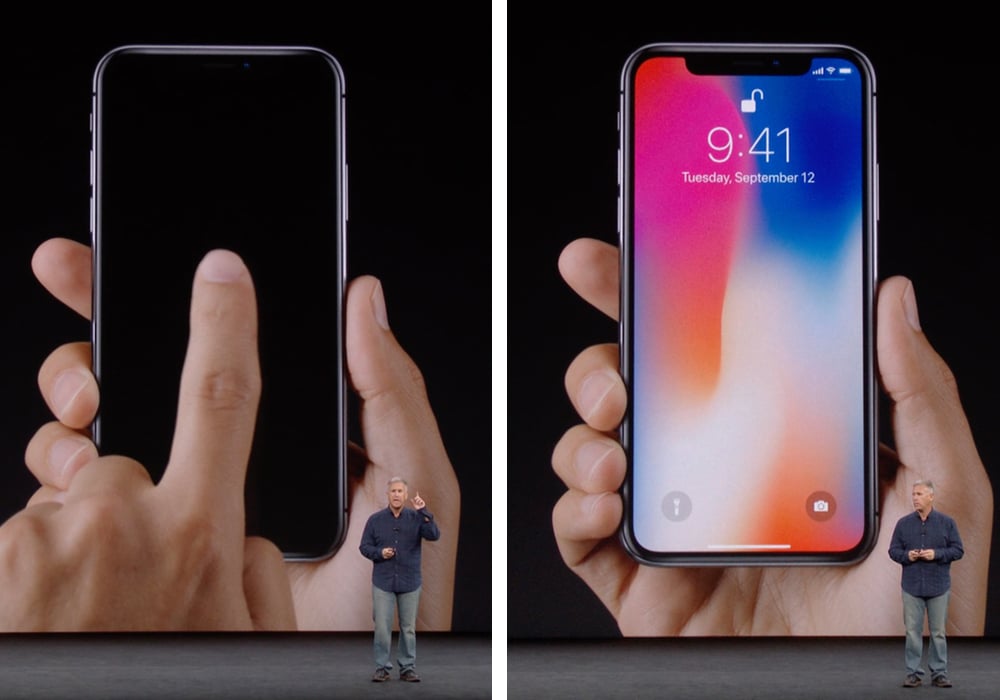
iPhone X has the same problem. With an aspect ratio of 18: 9 and without the 'home' button, it would be awkward to reach the side button every time. Fortunately, the 'Tap to Wake' feature comes to the rescue. The screen iPhone X just needs to be touched to light it up.
Bonus: Face ID
Face recognition on phones Android appeared before Touch ID appeared on iPhone. In 2012, Android 4.0 Ice Cream Sandwich introduced a feature that uses the front camera to unlock the phone. It worked accurately in good lighting, but not in the dark. Later the function was improved, but it is still quite easy to cheat.
Samsung has been using 'iris' technology since the Galaxy Note 7. It performed better in low light and was harder to fool. But in reality this was not the case.
Face ID is safer than any other face recognition system. Of course, she can also be deceived, but this is not so easy. While the OnePlus 5T's similar 'Face Unlock' feature seems very fast, it's not very secure. That is why it cannot be used to purchase applications and Android Pay.
Face ID isn't perfect, and in some respects, Touch ID was more reliable, but it offers a great balance of comfort and security. This is the best face recognition technology at the moment.
conclusions
To end the article with the famous quote from Steve Jobs in 1996: 'Picasso spoke' good artists copy; great artists steal, “and we never denied that we steal great ideas.” Some of the functions Apple were stolen, but what is good about the company is that it always brings other people's technologies to perfection. Thanks to this, the company continues to be not the first place in its field.
